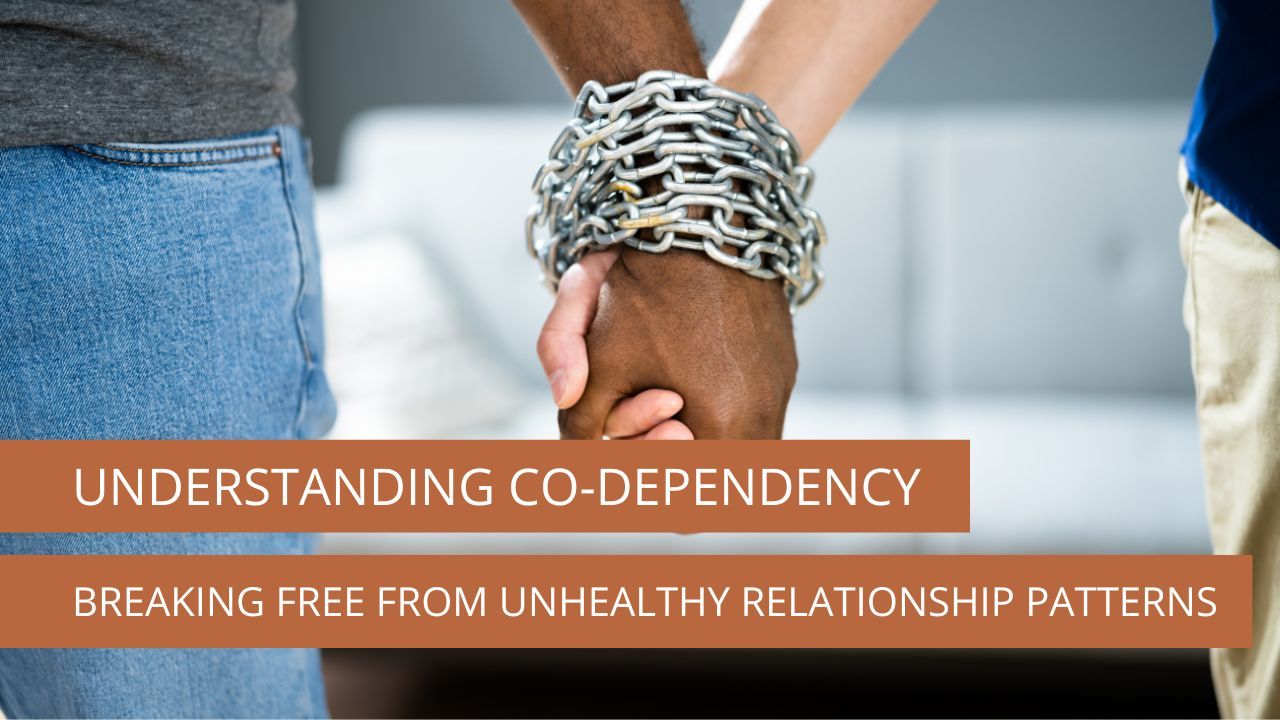Understanding Co-dependency: Breaking Free from Unhealthy Relationship Patterns
May 25, 2023
Last week I had someone email about co-dependency and I realised that I was short a blog post on the topic. This is going to be a rather info-heavy one instead of me telling all the stories. When I first went into unravelling my own people-pleasing patterns I was focused on re-learning who I was as an individual. This meant that I also had to relook at all of my relationships. The people who served me and met me with the same level of respect and kindness I gave to them. It was big work however there were a few surprises lurking there - like how much I relied on others to give me validation for who I was. This is co-dependency 101 aka people pleasing) to fill my sense of worth, I trusted others over myself. Wild times.
Let's explore co-dependency. What it is, the signs and symptoms, how it develops, its causes, and most importantly, how to break free from codependent patterns.
What is codependency?
Codependency refers to a psychological and behavioural condition where individuals excessively rely on others for their emotional well-being and sense of self. They often neglect their own needs, enabling and taking care of others to the detriment of their own happiness and personal growth. It's highly complex and affects all types of relationships (mother-daughter, husband-wife, father-son employee-boss, and friend-friend etc).
Signs and symptoms of codependency:
- Difficulty setting boundaries
- People-pleasing tendencies
- Low self-esteem and self-worth
- Fear of abandonment or rejection
- Poor communication skills
- Control issues
- Difficulty expressing emotions
- Overwhelming need for approval and validation
How does codependency develop?
Codependency can stem from various factors, including upbringing, dysfunctional family dynamics, trauma, or substance abuse in the family. It often develops as a coping mechanism to deal with emotional pain, neglect, or abuse, and can carry over into adulthood and affect relationships in multiple areas of life. Many people know about the flight, fight and freeze response however, there is a fourth called fawn. The fawn response is where one downplays their needs in order to survive aka people please to keep the peace in a situation.
Causes of codependency:
- Childhood experiences of neglect, abuse, or inconsistent caregiving
- Parental addiction or mental health issues
- Lack of healthy relationship role models
- Overprotective or controlling parenting styles
- Cultural and societal factors that promote self-sacrifice and putting others' needs first
Codependency vs. healthy relationships
In healthy relationships, there is a balance between giving and receiving support, while maintaining individuality and personal boundaries. A healthy relationship should feel like a yin and yang flow of energy between two people. Communication is clear and both people understand one another without having to adjust who they are. Where codependent relationships, on the other hand, are characterised by an imbalance of power and an excessive focus on the other person's needs, often at the expense of one's own well-being.
Common behaviours and patterns in codependent relationships:
- Enabling destructive behaviours
- Becoming overly responsible for others' happiness
- Feeling responsible for solving others' problems
- Difficulty expressing personal opinions or desires
- Feeling guilty or anxious when asserting personal boundaries
- Losing touch with personal interests and goals
How to break free from codependent patterns:
Like any self-work it's a process, this isn't an easy fix that will just go away, it's an unravelling of your beliefs while you slowly create new behaviours to support who you truly want to be. It's about creating healthy relationships (first with self and then with others) usually starting with the people you love first.
Tools to get you started:
- Developing self-awareness: Recognize codependent behaviours and their underlying causes.
- Setting healthy boundaries: Learn to assert your needs and establish boundaries to protect your well-being.
- Prioritizing self-care: Focus on your own physical, emotional, and mental health.
- Seeking therapy or counselling: Professional help can provide guidance and support in addressing codependency.
- Building a support network: Surround yourself with supportive, healthy relationships and seek out support groups or workshops focused on codependency recovery.
- Engaging in self-reflection and personal growth: Explore your own interests, goals, and passions, and work on improving self-esteem and self-worth.
---
Codependency is a challenging issue that can impact individuals' emotional well-being and relationships. By understanding the signs, causes, and behaviours associated with codependency, individuals can take proactive steps towards breaking free from unhealthy patterns and fostering healthier, more balanced relationships based on mutual respect, support, and personal growth. Remember, change takes time and effort, but with self-awareness and a commitment to self-care, breaking free from codependency is possible.


















